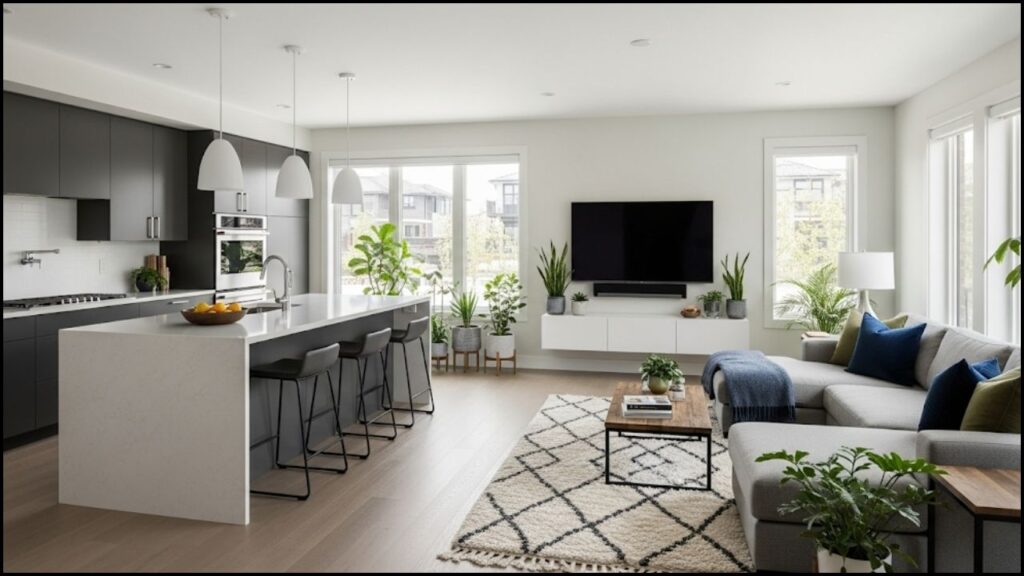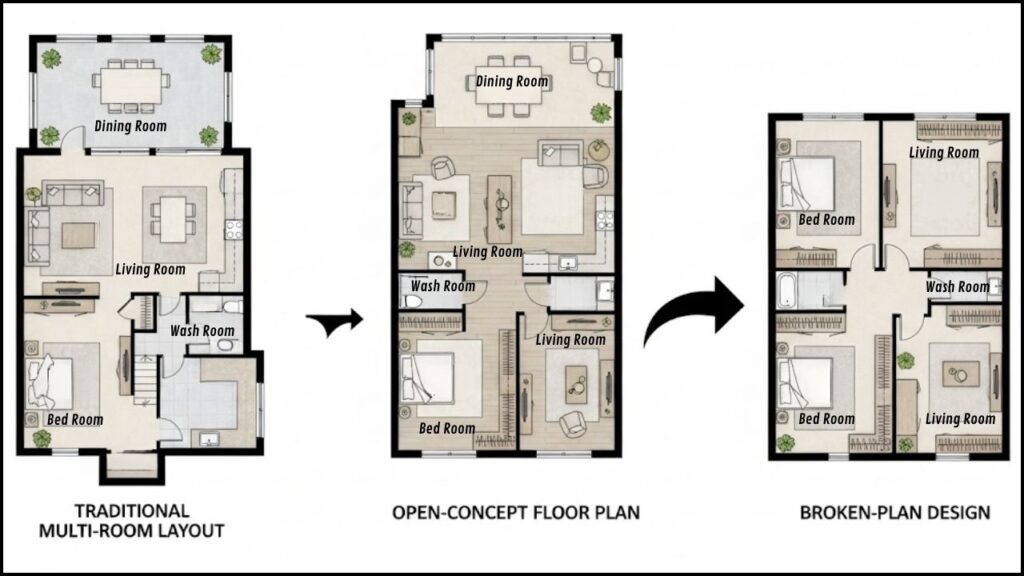
The once-lauded open-concept floor plan regret has emerged as the most common source of homeowner remorse, according to a consensus among professional interior designers and architects. This significant shift in sentiment, accelerated by recent changes in work and family life, highlights a growing disconnect between a popular aesthetic and the functional needs of modern households. What was once seen as the pinnacle of spacious, modern living is now frequently cited as a major design flaw due to issues of noise, privacy, and perpetual clutter.
The Unraveling of a Modern Ideal
For decades, the Open-Concept Floor Plans layout reigned supreme in residential design. Spurred by mid-20th-century architectural movements and amplified by popular television shows, the style promised a sense of community and seamless flow between living, dining, and kitchen areas. Its appeal was rooted in the perception of greater space, abundant natural light, and an environment conducive to socializing while preparing meals. “The open floor plan was sold as a solution to compartmentalized living,” said Dr. Anya Sharma, an architectural historian and professor at the University of California, Berkeley. “It was a symbol of freedom from the rigid, Victorian-era layouts and a celebration of a more informal, connected lifestyle. For a time, it represented the future of American homes.”
However, this design philosophy was predicated on the assumption that homes were primarily social hubs, with daily life often happening elsewhere. This premise has been challenged by the dramatic increase in remote work and schooling over the past five years. As homes became multi-purpose environments for work, education, and recreation, the limitations of the Open-Concept Floor Plans design became starkly apparent.
The Core Problems: Noise, Privacy, and Practicality
Designers report that the primary complaints from homeowner’s center on three critical issues. The first is a lack of auditory separation. In an open space, sound from a television, a blaring oven timer, or a conversation in the kitchen can easily disrupt someone in the living room trying to work or read.
“The acoustics of these spaces are often an afterthought,” noted Michael Chen, a principal at Chen & Associates Design in Chicago. “We’ve had clients tell us they can’t have a private phone call without their family members hearing everything. What was once an ‘airy’ space now feels like a noisy echo chamber.” The second issue is a critical lack of privacy. The absence of walls means there is no physical retreat for a family member seeking solitude. This has become a significant source of frustration for those needing a quiet space for focused work or a moment of respite.
The third and perhaps most surprising problem is visual clutter. An Open-Concept Floor Plans design means that a messy kitchen countertop, a pile of laundry, or children’s toys are constantly in view. There is no door to close to hide the day’s mess. This contributes to a sense of visual chaos, undermining the very sense of calm and order that homeowners sought.
“One of the biggest home design mistakes is prioritizing a sleek aesthetic over day-to-day function,” said Lauren Cho, a certified interior designer with the American Society of Interior Designers (ASID). “The reality of an open layout is that your clean living room becomes instantly cluttered the moment a single dish is left in the sink. There’s no psychological break from the mess.”
Open-Concept Floor Plans: The Search for a Functional Middle Ground
In response to this widespread dissatisfaction, a new trend is gaining momentum: “broken-plan living.” This approach seeks to find a balance between the airiness of an open layout and the practical benefits of defined spaces. Designers are now incorporating partial walls, elegant shelving units, and sliding partitions to segment large rooms without completely closing them off.
“It’s not about reverting to the old, compartmentalized layouts,” Chen explained. “It’s about creating functional living spaces that are flexible. We’re using features like floor-to-ceiling bookshelves or decorative screens to create zones a work zone, a play zone, a relaxation zone that still allow for light and connection.”

This shift underscores a broader re-evaluation of home design. The focus is moving away from purely stylistic choices, like specific kitchen trends or an all-white palette, and towards a more human-centered approach that considers the lived experience of the occupants. The conversation among designers is now centered on flexibility, adaptability, and an honest assessment of how a family actually uses their home.
The newfound emphasis on functionality over form suggests a permanent re-calibration of residential design priorities. As designers and homeowners alike move forward, the lessons learned from the limitations of the Open-Concept Floor Plans layout will likely shape the next generation of architectural and interior design choices, leading to more practical and livable homes for a variety of lifestyles.
